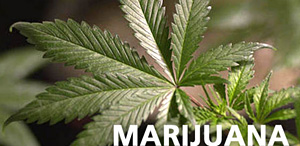







|
ILLEGAL DRUGS /
CONTROLLED SUBSTANCES
Controlled Substances Act (CSA)
[Contraband (i.e., illegal to possess)
Substances and How “Classification” is Determined]
 The
Controlled Substances Act (CSA), Title II of the Comprehensive Drug Abuse
Prevention and Control Act of 1970, is the legal foundation of the
government's fight against the abuse of drugs and other substances. This law
is a consolidation of numerous laws regulating the manufacture and
distribution of narcotics, stimulants, depressants, hallucinogens, anabolic
steroids, and chemicals used in the illicit production of controlled
substances. The
Controlled Substances Act (CSA), Title II of the Comprehensive Drug Abuse
Prevention and Control Act of 1970, is the legal foundation of the
government's fight against the abuse of drugs and other substances. This law
is a consolidation of numerous laws regulating the manufacture and
distribution of narcotics, stimulants, depressants, hallucinogens, anabolic
steroids, and chemicals used in the illicit production of controlled
substances.
The CSA places all substances that are regulated under existing federal law
into one of five schedules. This placement is based upon the
substance's medicinal value, harmfulness, and potential for abuse or
addiction. Schedule I is reserved for the most dangerous drugs that
have no recognized medical use, while Schedule V is the
classification used for the least dangerous drugs. The act also provides a
mechanism for substances to be controlled, added to a schedule,
decontrolled, removed from control, rescheduled, or transferred from one
schedule to another. Punishment for violations of the law are severe,
especially for Schedule I and Schedule II drugs, which are “100% contraband”
(Schedule I) or “conditionally contraband” absent approved DEA use by those
holing a permit (Schedule II). See <http://www.usdoj.gov/dea/concern/abuse/chap1/penal/chart1.htm>
Proceedings to add, delete, or change the schedule of a drug or other
substance may be initiated by the Drug Enforcement Administration (DEA), the
Department of Health and Human Services (HHS), or by petition from any
interested party, including the manufacturer of a drug, a medical society or
association, a pharmacy association, a public interest group concerned with
drug abuse, a state or local government agency, or an individual citizen.
When a petition is received by the DEA, the agency begins its own
investigation of the drug.
The DEA also may begin an investigation of a drug at any time based upon
information received from law enforcement laboratories, state and local law
enforcement and regulatory agencies, or other sources of information.
Once the DEA has collected the necessary data, the DEA Administrator, by
authority of the attorney General, requests from the HHS a scientific and
medical evaluation and recommendation as to whether the drug or other
substance should be controlled or removed from control. This request is sent
to the Assistant Secretary of Health of the HHS. Then, the HHS solicits
information from the Commissioner of the Food and Drug Administration and
evaluations and recommendations from the National Institute on Drug Abuse,
and on occasion, from the scientific and medical community at large. The
Assistant Secretary, by authority of the Secretary, compiles the information
and transmits back to the DEA a medical and scientific evaluation regarding
the drug or other substance, a recommendation as to whether the drug should
be controlled, and in what schedule it should be placed.
The medical and scientific evaluations are binding to the DEA with respect
to scientific and medical matters. The recommendation on scheduling is
binding only to the extent that if HHS recommends that the substance not be
controlled, the DEA may not control the substance.
Once the DEA has received the scientific and medical evaluation from HHS,
the Administrator will evaluate all available data and make a final decision
whether to propose that a drug or other substance be controlled and into
which schedule it should be placed.
The CSA also creates a closed system of distribution for those authorized to
handle controlled substances. The cornerstone of this system is the
registration of all those authorized by the DEA to handle controlled
substances. All individuals and firms that are registered are required to
maintain complete and accurate inventories and records of all transactions
involving controlled substances, as well as security for the storage of
controlled substances.
Photographs of
some of the 100s of Illicit
Ecstasy Pills Sold in the USA
(Sample pictures from http://www.erowid.org)
|

|
Dove |
|
 |
E |
|

|
Elephant (White) |
|

|
Euro (White)
|
|

|
Euro (Orange) |
Contraband Drugs and United
States Law
|
Schedule I (MOST CONTROLLED OF ALL
SUBSTANCES/DRUGS) |
Examples: Heroin; Codeine
methylbromide; “ crystal meth”; Peyote; Normethadone,
Acetyldihydrocodeine, Dihydromorphine, etc. |
|
FEDERAL
|
Sec. 1308.11
Schedule I shall consist of
the drugs and other substances, by whatever official name, common or
usual name, chemical name, or brand name designated, listed in this
section. Each drug or substance has been assigned the DEA Controlled
Substances Code Number set forth opposite it.
For federal penalty ranges,
see: |
|
STATE
|
STATE definition of Schedule I
drugs: (Georgia)
(A) The drug or other
substance has a high potential for abuse;
(B) The drug or other
substance has no currently accepted medical use in treatment in the
United States; and
(C) There is a lack of
accepted safety for use of the drug or other substance under medical
supervision. |
|
Schedule II |
Highly Controlled; DEA permit
must be secured for anyone to possess or use. |
|









